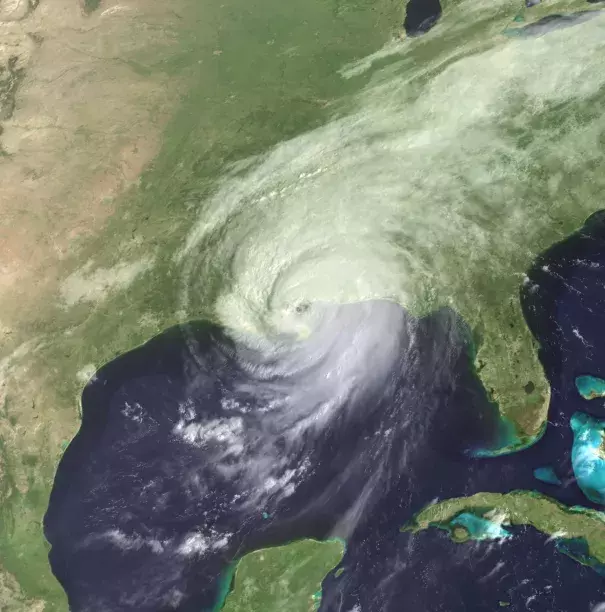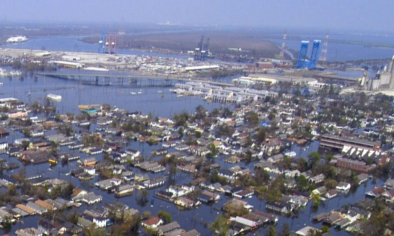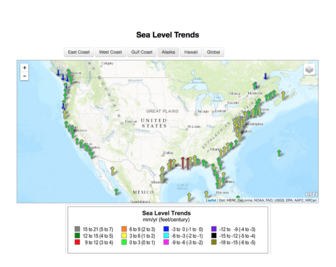Headline
Hurricane Katrina: Facts, Damage & Aftermath
United States

Hurricane Katrina moved ashore over southeast Louisiana and southern Mississippi early on August 29, 2005, as an extremely dangerous Category 4 storm. Photo: GOES Project Science Office
Katrina was the most destructive storm to strike the United States and the costliest storm in U.S. history, causing $108 billion in damage, according to the National Oceanic and Atmospheric Administration (NOAA). It ranks sixth overall in strength of recorded Atlantic hurricanes. It was also a very large storm; at its peak, maximum winds stretched 25 to 30 nautical miles (46 to 55 kilometers) and its extremely wide swath of hurricane force winds extended at least 75 nautical miles (138 km) to the east from the center.
Related Content
Headline

Nov 15, 2016 | Nexus Media
A Heartbreaking Hurricane
Real Time Data

Apr 1, 2016 | NOAA Tides and Currents
US Sea Level Trends
Science Source
| Climatic Change
Simulations of Hurricane Katrina (2005) under sea level and climate conditions for 1900
Jennifer L. Irish, Alison Sleath, Mary A. Cialone et al
Science Source
| Proceedings of the National Academy of Sciences
Homogeneous record of Atlantic hurricane surge threat since 1923
Aslak Grinsted, John C. Moore, Svetlana Jevrejeva


